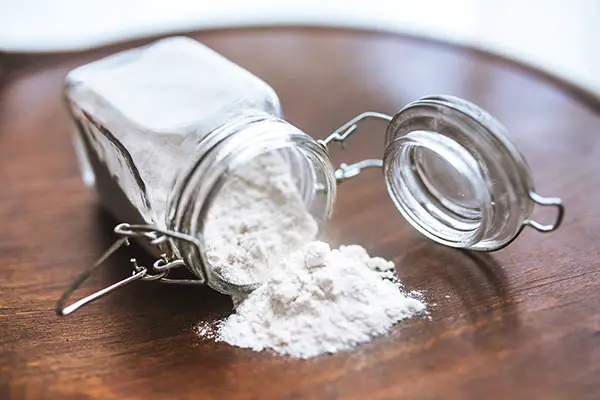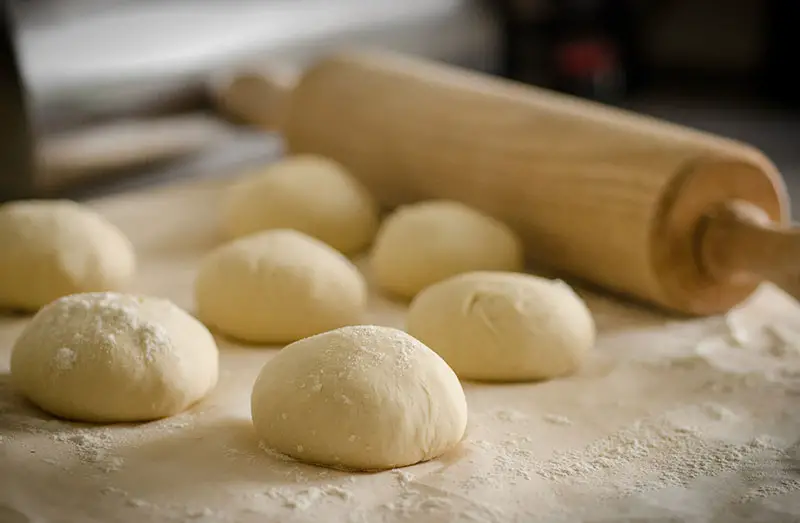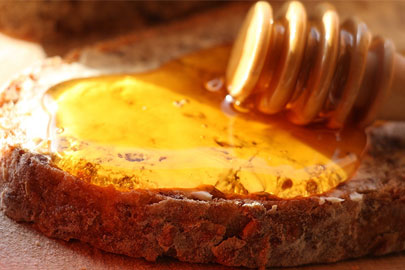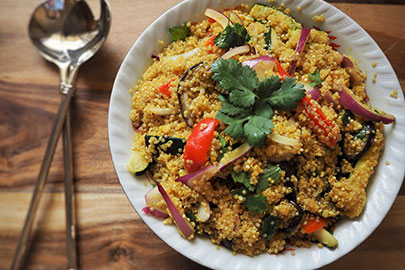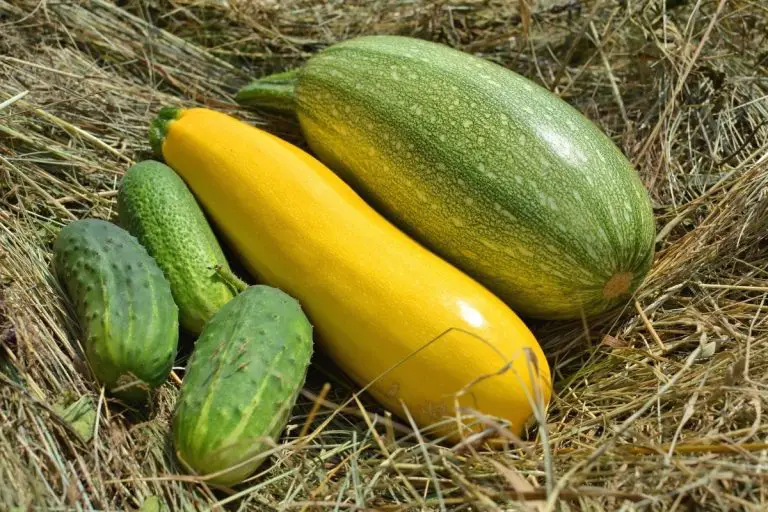What’s the Difference between White Bread and Wheat Bread?
Some countries like France like bread, which is great because France is the richest country in terms of types of breads.
We find it under every possible form (baguette, bread, ball, etc.), and in every color (white, wholewheat, cereals, yeast, etc.). Do you really know the differences between these types of bread?
The main difference between white bread and wheat bread is in the recipe of its preparation.
White bread is made of wheat flour, the white one, while wheat bread (or brown bread) is made with wholewheat flour, milled from whole wheat grains.
This is obviously the simple answer. Now, let’s see all of this in details, with notably the making process, as well as the advantages and disadvantages of each type of bread.
White bread
Definition
White bread is a bread made of wheat flour/all-purpose flour, from which we removed the bran and the germs, which gives it a frank white color.
Wikipedia
As I said in the introduction, the differences between each type of bread come from the recipes.
So now, we are going to see how white bread is made.
Preparation
The wheat flour being used for the making of traditional bread is made out of wheat.
The wheat is harvested in the fields, often on immense surfaces, using combine harvester such as this one:
The wheat harvest
The harvested wheat is then milled, then sifted, to only preserve the inside part of the wheat grain.
Your baker then makes his bread out of this wheat flour, obtained after having sifted the grinded wheat.
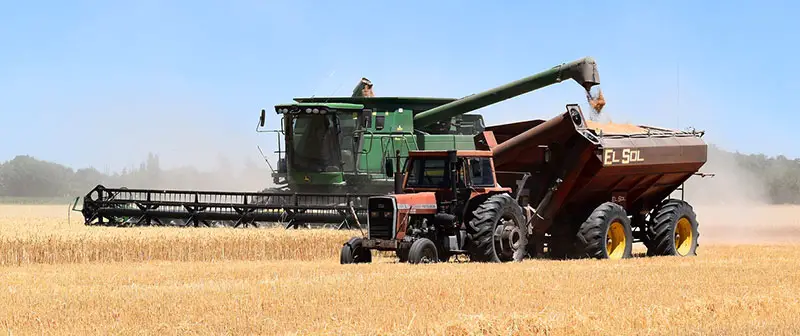
It is then mixed with water and yeast, which we then let raise before giving it the desired form.
Finally, it is then baked in the oven, then served warm, for your biggest pleasure 🙂
Illustrations
In order to better imagine the different steps, here are numerous illustrations that correspond to everything that has been explained right above:
Nutritional information
Even though it is most solicited in France (over 10 million baguettes are sold every day), white bread is not necessarily good for your health.
First, in terms of nutritional information, here is what you should remember.
A 100-gram slice of bread (a little less than half of a baguette) contains:
- about 260 calories, which is relatively high considering it is rare to eat bread by itself
- lipids: 3g
- carbohydrates: 50g, including 5g of sugar
- proteins: 10g
- in terms of minerals provided, it is relatively low because most of the minerals are found in the husk of the wheat grain, which isn’t conserved in the making of white bread.
In addition to what I already said regarding minerals, the detractors of white bread reproach it many things.
For example, bread has a high glycemic indicator because of the important presence of sugar, which makes us gain weight.
It also contains lots of gluten and salt (the sodium on my list is mostly salt).
If you are interested in this topic, I recommend you to educate yourself on the topic with the help of nutrition experts, who will confirm you that white bread is to be avoided at the maximum for the benefit of your health.
Homemade white bread recipe
Bread is totally makeable at home without any particular material.
I will talk to you about the advantages of bread makers later in this article, but it is completely possible to make your own bread in the oven.
The advantage of homemade white bread is that is does not necessitate many things to be prepared.
The ideal recipe to make on a Sunday evening, when you haven’t gone grocery shopping 🙂
Here are the necessary ingredients:
- 500g (17 ounces) of flour
- 300mL (10.5 ounces) of warm water
- 10g of salt
- 12g of yeast
You normally have these ingredients at home.
The ideal is to have baker’s yeast in stock.
For the preparation, I invite you to watch this very clear video that details the steps:
Wheat bread
Now, let’s move on to wheat bread, or brown bread, before comparing it to white bread.
Definition
Wheat bread (or brown bread) is a bread made of wholewheat flour.
Wikipedia
As you probably understood with this brief definition, the main difference between wheat bread and other types of bread is the flour that it used.
But what is wholewheat flour? We’ll see that right now.
Preparation
The recipes and methods of wheat bread’s making being very similar to those of white bread, here, I will focus on the making of wholewheat flour.
If you haven’t done it yet, I encourage you to read about the making of white bread, explained above, for more information.
For wholewheat flour, we keep the whole wheat grains, which means that the husk is preserved.
This is the only difference between both modes of preparation, but it changes everything. We will see that later.
Wholewheat flour is therefore darker than white flour (hence its name).
Illustrations
As for white bread, here are some images of wholewheat flour, and the then obtained bread:
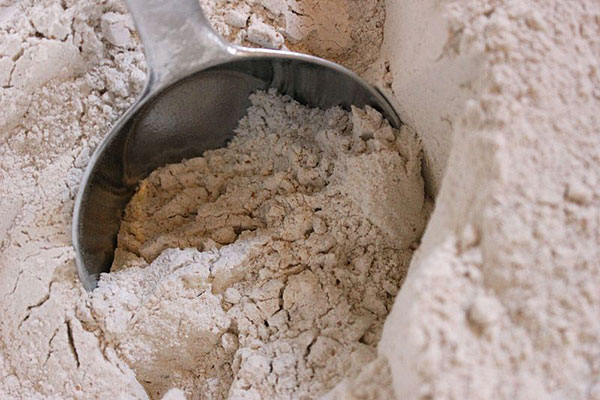
Wholewheat flour (source : Margaret Hoogstrate [CC BY 3.0]) 
Wheat bread, or brown bread
Nutritional intakes
As you probably guessed with the beginning of the article, the nutritional intakes of wheat bread are completely different considering its method of preparation.
The nutritional intakes of wheat:
- Calories: 340.
- Protein: 13 grams.
- Carbs: 72 grams.
- Sugar: 0.4 grams.
- Fiber: 11 grams.
- Fat: 2.5 grams.
The husk (also called bran) is the part that contains most of the intakes that are useful to our organism.
The glycemic indicator for wheat bread is far better (60 against 75 for white bread), and it provides more fibers and minerals.
However, you should favor an organic flour or organic bread because the wheat’s husk is also the one that is the most exposed to chemicals.
Even though an organic product isn’t a full guarantee, it does limit the risks.
Homemade wheat bread recipe
It is also possible to make your own wheat bread at home, with or without a machine.
Here are the ingredients to use (example):
- 250g (8.8 ounces) of wholewheat flour
- 250g (8.8 ounces) of semi-wholemeal flour
- Optional: a little bit of flax flour
- Baker’s yeast
- A little bit of salt (a teaspoon)
- 60mL of water
Here is the video that shows the recipe:
In case you don’t necessarily have as much time to give to the bread making, whatever its type (which I understand!), I recommend you to invest in a bread maker which will do all the work for you.
Indeed, with a bread maker, all you have to do is put the ingredients inside, and the machine takes care of everything (knead, rise, bake).
This will operate for about 3 hours, and your bread will be ready whenever you’ll want it to be, without having anything else to do.
Most machines offer a delayed start, which, if you don’t have 3 hours ahead of you before eating, allow you to start the making before you arrive.
I personally use a KBS machine, which I am fully satisfied with.
If you’re interested, it is available here on Amazon for an affordable price.
This will also allow you to make all types of dough, like brioches, which are delicious!
Differences between white bread and wheat bread
Even though this has already been more or less done in the part about wheat bread, I am going to sum up the main differences between both breads.
Preparation
The main difference between white bread and wheat bread comes from its making.
White bread is made by simply keeping the heart of the wheat, while the husk is preserved for the making of wheat bread.
Flours
The two flours are differentiable by their colors.
Wholewheat flour will be darker than the white flour that is used to make white bread.
Breads
The same way, wheat bread is darker than white bread.
It is also generally denser.
Nutritional intakes
Finally, regarding your health, there is a big difference between white bread and wheat bread.
By keeping the wheat’s husk during its making, we also keep a big part of its intakes (fibers and minerals, notably).
Wheat bread is therefore better for our health.
Conclusion
I have a bit of trouble to understand how, in France, the country that consumes the most bread, it is hard to find very precise articles on this topic.
Anyway, I hope this article has helped you understand better the differences between these types of bread.
If you’d like to learn more about these differences between different types of breads, you might find more information in books.
For example, in this fantastic book by Peter Reinhart about mastering the art of bread.



